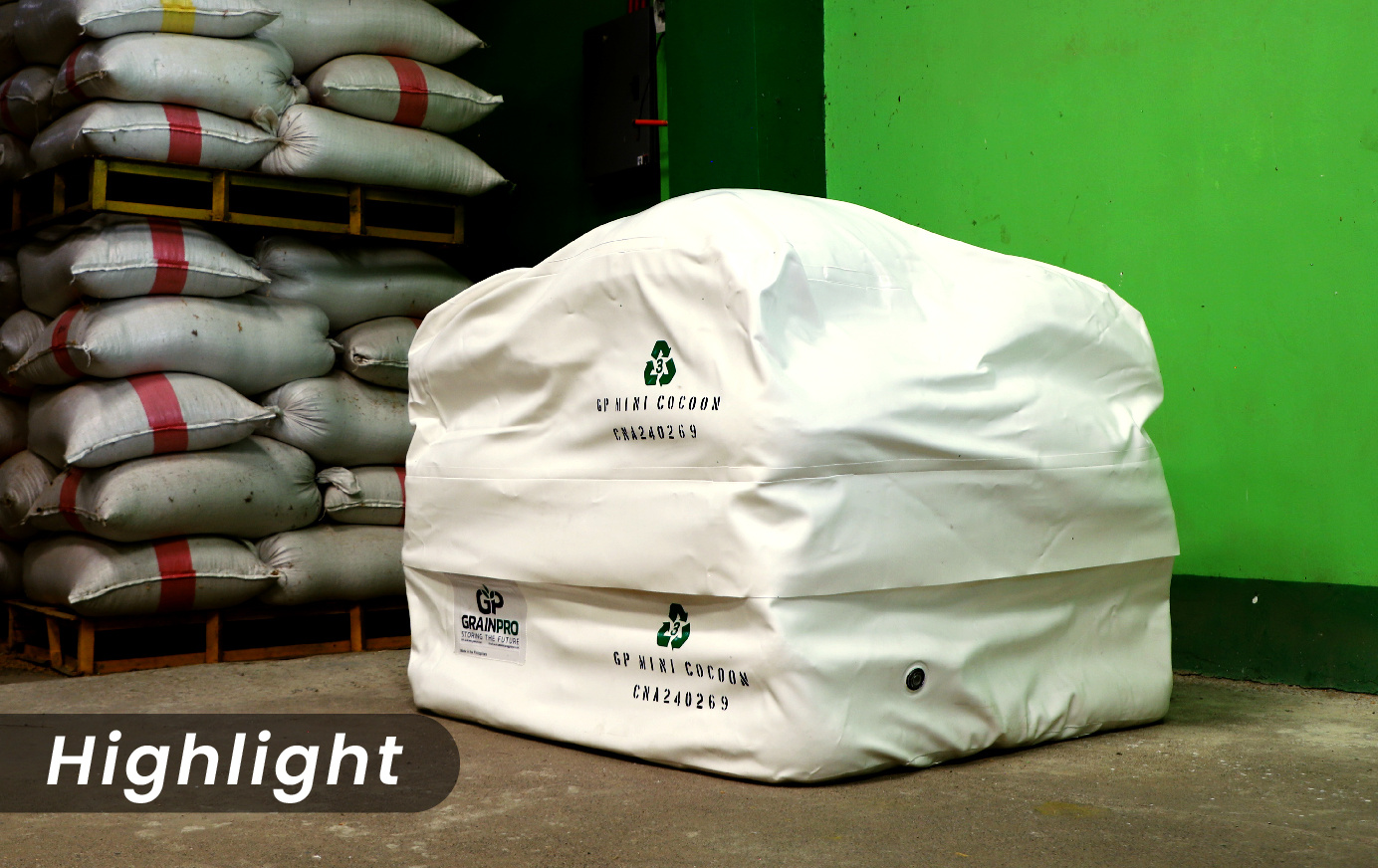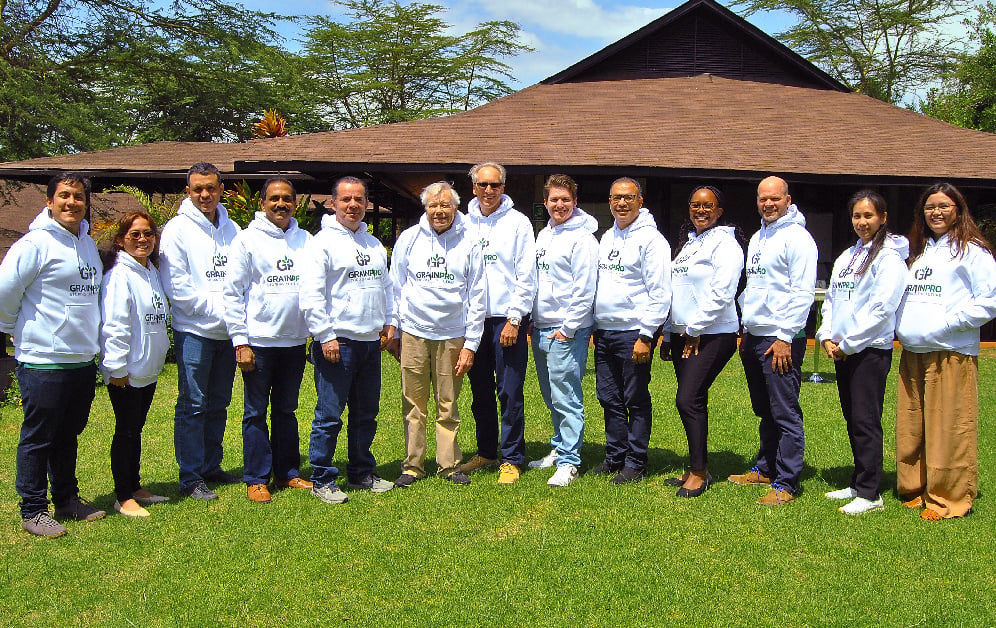Nutritious food is a fundamental need for our survival. But a report from FAO estimates that in 2020, close to 12% of our global population was severely food insecure. This represents close to 928 million people, many of whom belong to developing countries.
The same report also indicates that conflict, climate change, and economic slowdowns and downturns affect global food security. This has been exacerbated by the COVID-19 pandemic, with its effects still felt by much of the world years after it began.
Another driver for increased global food insecurity is post-harvest food loss. Because of mismanagement and poor infrastructure, $1 trillion worth of food is wasted every year. In developing countries, much of this food is lost after harvest, mainly due to inefficient handling and storage, according to WFP. Smallholder farmers in these countries lack the technology and access to market that they need to sustain their operations. As a result, insect infestations and mold growth damage their crops, leading to post-harvest losses and a loss to the farmers' incomes as well.
Technology as a solution
A possible course of action to solve such a complex and alarming issue is to reduce post-harvest food loss through hermetic technology. This concept has been applied since the Neolithic period when our ancestors used air-tight underground pits to store food. As societies developed over time, these underground pits became more varied in shape and depth. Thus, hermetic storage was born. By using an air-tight and moisture-tight controlled or modified atmosphere, dry agricultural commodities are safely preserved.
Related: A Brief History of Hermetic Technology
So how can this prehistoric technology help solve today's food loss problem? One way is to use large-scale hermetic storage for staple crops like maize, wheat, and rice. Doing so will control insect infestations since the natural respiration of the insects and commodities will lower the oxygen levels inside the air-tight and moisture-tight atmosphere. Handlers should then ensure that the hermetic container is sealed until all insects, including eggs, larvae, and pupae, are eliminated, which can also be sped up through carbon dioxide fumigation.
Related: All You Need To Know About Hermetic Storage
Another way to reduce food loss using hermetic technology is to secure food commodities during transit, especially in transoceanic transfers. These trips usually last weeks or months, allowing insect infestations to develop and damage commodities. On top of this, “rain” can often occur inside shipping containers due to the formation of condensation during prolonged transfer periods. This re-wets and damages the commodities, leading to deteriorated quality, mold growth, and spoilage.
Even if a shipment of commodities arrives at its destination port intact, it can still be damaged because of port delays that happen on a daily basis all over the world. Accidents like the Suez Canal incident in 2021 can delay shipments and result in the commodities becoming spoiled or getting extensively damaged by insects that have multiplied and fed on the food.
According to the Organisation for Economic Cooperation and Development (OECD), more than 80% of the worldwide trade in grains and oilseeds is done through transoceanic transport. Thus, much of our global food supply is at risk if no protective protocols or tools are placed to anticipate potential transit issues.
To help reduce global food loss and insecurity, GrainPro has developed solutions to address both storage and transport issues. One is the GrainPro Cocoon: a large-capacity flexible hermetic storage solution that can hold from 5 metric tonnes to up to 300 metric tonnes of dry agricultural commodities. This storage solution has all the benefits of hermetic technology to help preserve both the quality and quantity of staple foods like rice, wheat, and maize even for an extended period.
GrainPro has also developed the TranSafeliner, a shipping container liner, to help protect commodities during maritime transfers. This hermetic transport solution guards against insect activity, moisture build-up, and quality damage, providing protection that is much needed for staple crops, especially for shipments bound for import-reliant countries.
Other ways to reduce post-harvest loss
When it comes to post-harvest management, there are other methods that farmers and food handlers can utilize to avoid food loss. One of the most effective ways is to ensure that agricultural commodities contain a safe moisture content level before storage. This can be done by sufficiently drying commodities so no excess moisture can lead to quality deterioration and mold growth. The Collapsible Dryer Case II (CDC II) is a specialized drying floor that can be used to protect commodities from erratic weather conditions. This drying solution can be zipped close to cover commodities and comes with inflatable side walls to keep out debris and contaminants.
Another way to reduce post-harvest food loss is to regularly monitor commodities in storage since many factors can affect the viability and quality of commodities during storage, such as oxygen levels, relative humidity, carbon dioxide levels, and temperature. Without proper monitoring protocols, farmers and food handlers can lose tonnes and tonnes of their products without even realizing it.
GrainPro’s remote sensing system called EcoWiSe can help avoid this problem, with sensors that can perfectly partner with hermetic storage. Stored commodities can be protected without the need to reopen sealed storage by monitoring the ambient atmosphere inside using the EcoWiSe. Users can be alerted of excess moisture build-up and rising oxygen levels caused by leaks or tears in the storage unit, allowing early intervention and helping avoid food loss.
If applied globally, large-capacity hermetic storage and transport solutions can help save dry agricultural commodities and have wide-ranging positive impacts. First, smallholder farmers and traders can increase profits and improve their livelihoods. Resources such as land, water, energy, and agricultural inputs would not be wasted, which would mean millions of dollars in savings for the global agricultural sector. Moreover, food loss and insecurity can be reduced while food nutrients are preserved, resulting in accessible and healthier food.
With these benefits, hermetic technology can be a stepping stone towards having a more foodful world.
To learn more about hermetic technology and better post-harvest solutions, click the button below.
Date Published: October 1, 2024




-3.jpg)
